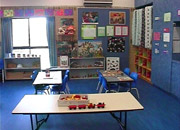Behaviour
Caring for babies
Bottle feeding
Changing a nappy
Cleaning and sterilising bottles
Daily cleaning tasks
Helping new children settle in
Preparing for a nappy change
Sleep patterns – babies
Sleep routines – babies
Toilet training
Caring for children
Allowing time for practice
Dressing/undressing
Mealtimes
Nappy change
Packing away/caring for the environment
Sleep/rest time
Toileting
Common self-help milestones
Tips for sleep and rest time
Self image
Communication
Body language
Limits and guidelines
Ways children communicate
Greeting children and families
Modelling appropriate communication
Questioning
Verbal and non–verbal communication
Acknowledging children's feelings
Listening attentively
Communicating with Aboriginal and Torres Strait Islander parents/carers
Development
Allowing time for practice
Dressing/undressing
Mealtimes
Nappy change
Packing away/caring for the environment
Sleep/rest time
Toileting
Common self-help milestones
Creative development
Language development
Modelling positive relationships
Physical development
Sharing and taking turns
Sleep patterns – babies
Sleep routines – babies
Encourage independent problem solving
Fundamental movement skills
Health, hygiene and safety
Coping with stress
Correct manual handling principles
Daily cleaning tasks
Hand washing
Hand washing poster
Manual handling overview
Toilet training
Safety checklist
Learning experiences and play
Environmentally friendly learning experiences
Learning experiences for different development areas
Creative resource materials
Arranging the environment to facilitate learning and pleasure
Indoors and outdoor areas
Creating a positive physical environment
Legal and ethical issues
Child abuse case studies
How do I recognise when a child or young person is at risk?
Tips on dealing with disclosures
Observation methods
Arranging Experiences (PDF 351Kb)
Recording observations
Rules for making observations
What you can learn from observations
Programming
Children’s interests, strengths, needs and skills
Extending the children’s interest in dinosaurs
Objective observation
Planning an OSHC environment
Behavior management plan
Planning enjoyable experiences
Planning experiences for 0 - 2 years age group
Planning experiences for 2 - 3 years age group
Planning experiences for 3 - 5 years age group
Creating a positive physical environment
Below is an example of a well planned out activity room. The area is set up ready for children, with appropriate furniture and equipment.

To help create a positive physical environment such as this, and promote independence, you should pay attention to the following.
- Provide a place where each child can keep their personal belongings
For example, a basket with the child's name and picture above it, or lockers like the ones in this picture. - Have furniture and equipment that is child-sized and in good condition.
The furniture, materials and other equipment in the room should be adapted so that children with varying abilities can be involved in all areas of the room. - Have equipment and materials on low shelves, encouraging children to select and use equipment on their own.
- Keep shelves neat and uncluttered so children can see what equipment is available.
- Organise equipment logically and locate it in areas where it is to be used so children can find what they want. Label shelves with pictures that show the children where equipment belongs.
- Display children's artwork in a child-focused way and with care.
- Have pictures on the wall, in books and in learning materials that reflect the cultural and social backgrounds of the children in the group.
- Provide equipment that ensures success for all children regardless of ability.
- Provide equipment that children can use independently, without the help of an adult.
- Provide a range of movable equipment is a good idea as it allows children to organise and arrange their environment.
- Provide mirrors for children to see themselves in, and photographs of themselves and their families.
This adds to an environment that supports and promotes self esteem.